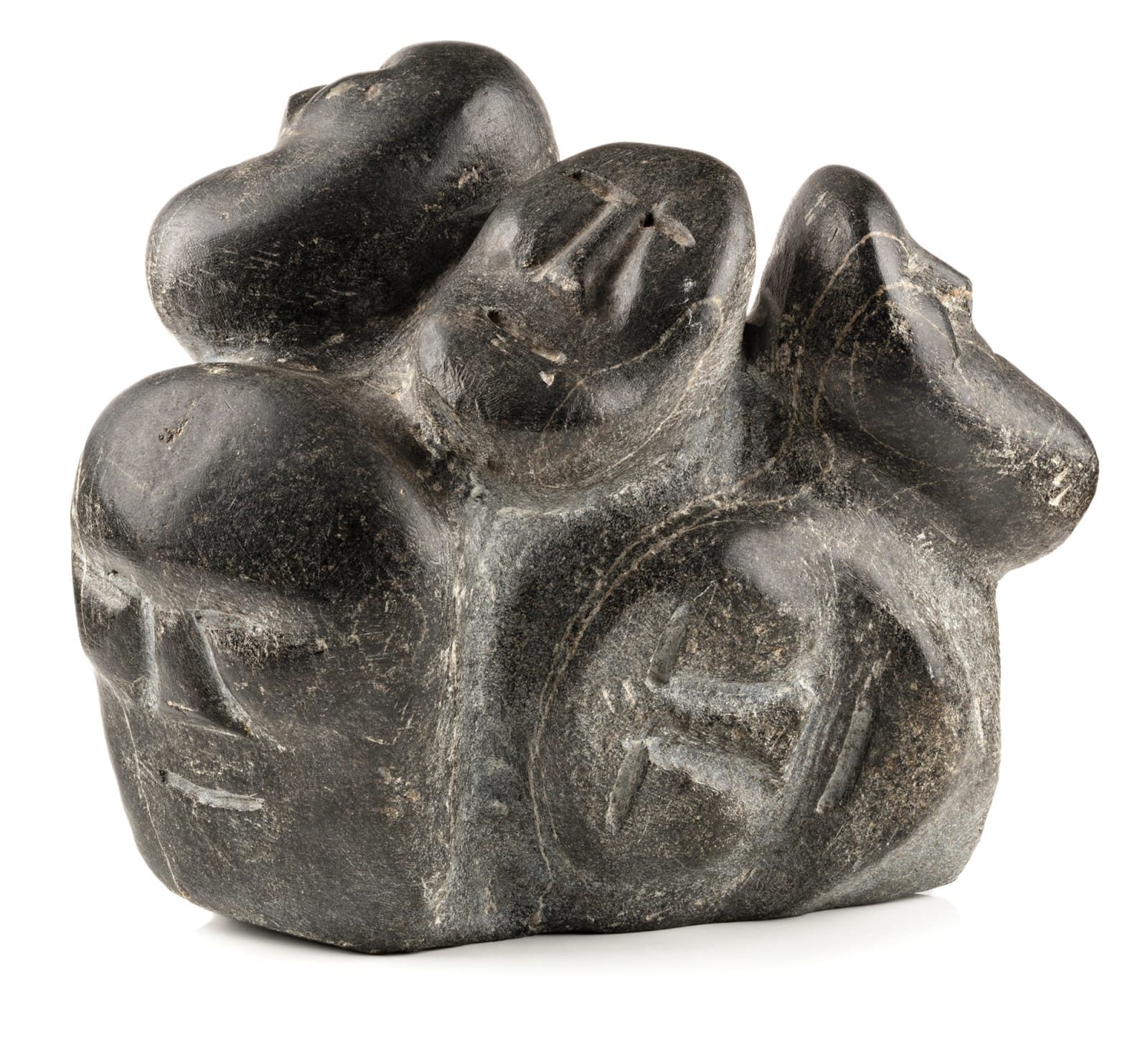-
Artworks
JOHN TIKTAK, R.C.A. (1916-1981) KANGIQLINIQ (RANKIN INLET)
Cluster of Heads, c. 1970stone, 9.25 x 11 x 6 in (23.5 x 27.9 x 15.2 cm)
signed, "ᑎᑕ".LOT 109
ESTIMATE: $15,000 — $25,000
PRICE REALIZED: $15,860.00Further images
The anthropologist Robert Williamson, who lived in Rankin Inlet from 1960 to 1973, was Tiktak’s first supporter and champion. He described Tiktak and his art as having “a quiet and...The anthropologist Robert Williamson, who lived in Rankin Inlet from 1960 to 1973, was Tiktak’s first supporter and champion. He described Tiktak and his art as having “a quiet and austere power” that could “…evoke intensity of feeling, simple insight and a stark and sad humanity that strikes upon the heart.” [1] Tiktak’s sculptures focus entirely on the human form: single standing figures; standing mothers and children; single heads and faces; and head and face clusters. Free of any Inuit cultural markers, clothing, and even extraneous anatomical details, the works are, effectively, universal statements on the human condition. George Swinton put it another way when he wrote, “…his communication is such that he requires the most elemental statements in content and form: he communicates elemental matter through primal form.” [2] This explains why, when we encounter Tiktak’s art, we experience not just an aesthetic and intellectual reaction but also a deep emotional and even visceral one.
Even in Tiktak’s figures, heads and faces dominate and define the images. Here, they almost overwhelm us with their power and mystery and emotional intensity. Cluster of Heads is one of the most profoundly moving examples we have seen. This work has the same potency and sculptural “presence” that some of the greatest examples by Tiktak share: Heads Emerging from Stone from 1967; Faces from 1971; Faces from 1973; Composition with Many Faces from 1974. [3] Each face has a singular demeanour; each has its own story to tell. Magnificent.
1. Robert G. Williamson, "An Arctic Gathering" in Norman Zepp, The Williamson Collection, (Regina: Norman Mackenzie Art Gallery, 1987) p. 7.
2. George Swinton, “Artists from the Keewatin” in Canadian Art, (No. 101, April 1966:32-34), p. 34.
3. See Sculpture/Inuit, (1971), cat. 404; McMaster ed., Inuit Modern, (2010), p. 127; Hessel, Inuit Art (1998), p. 98; and First Arts, 12 July 2020, Lot 18, respectively.
References: For important examples of this theme see Ingo Hessel, Inuit Art: An Introduction, (Vancouver: Douglas & McIntyre / New York: Harry Abrams / London: British Museum Press, 1998), pl. 76, p. 98. Gerald McMaster, ed., Inuit Modern: The Samuel and Esther Sarick Collection, (Toronto: Art Gallery of Ontario, 2010), p. 127. See also Jean Blodgett, Grasp Tight the Old Ways: Selections from the Klamer Family Collection of Inuit Art, (Toronto: Art Gallery of Ontario, 1983), cat. 147, pp. 223-224. See also Canadian Eskimo Arts Council, Sculpture / Inuit: Masterworks of the Canadian Arctic, (Toronto: University of Toronto Press, 1971), cat. 404; also illustrated in Maria von Finckenstein ed., Celebrating Inuit Art 1948-1970, (Hull, QC: Canadian Museum of Civilization, 1999), pp. 174-175.Provenance
Acquired by the present Private Collection, Winnipeg, MB from Kissarvik Co-op in Kangiqliniq (Rankin Inlet), Fall 1971.
Join our mailing list
* denotes required fields
We will process the personal data you have supplied in accordance with our privacy policy (available on request). You can unsubscribe or change your preferences at any time by clicking the link in our emails.










